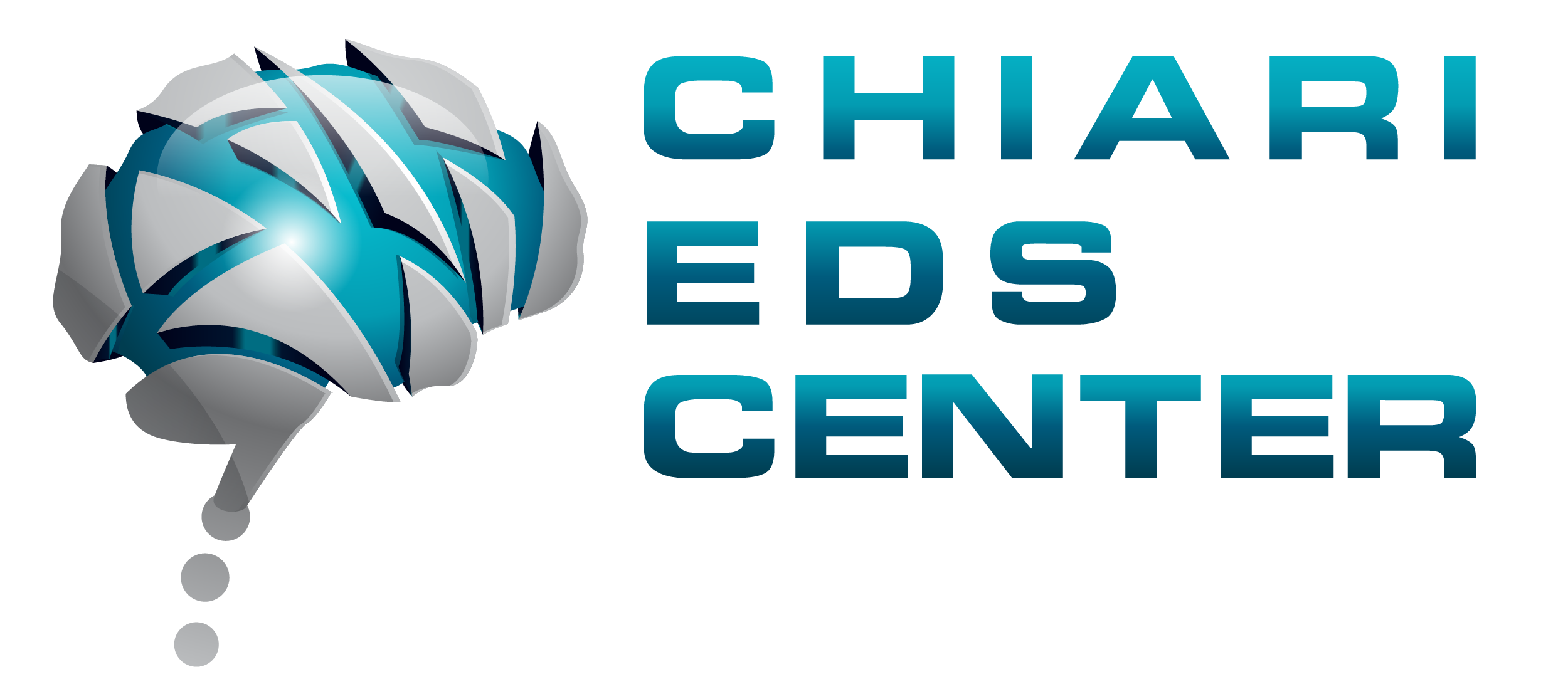At the Chiari EDS Center, we specialize in two critical areas: Chiari I Malformation (CMI) and Neuro-EDS.
CHIARI I MALFORMATION (CMI)
Our expertise in treating Chiari I Malformations dates back to the mid-90s.
CMI is a congenital disorder affecting the border zone between the brain and the spinal cord. It is often associated with conditions link Syringomyelia (SM) and related pathologies.
NEURO-EDS
With 25 years of experience, we have been at the forefront of treating Neuro-EDS since this field’s inception.
Neuro-EDS encompasses a group of disorders rooted in Ehlers-Danlos Syndrome (EDS) and other Connective Tissue Disorders. These conditions impact various areas of the Central Nervous System and include:
- Craniocervical Instability (CCI)
- Tethered Cord (TC)
- STING/Eagle Syndrome
- Idiopathic Intracranial Hypertension (IIH)
- Intracranial Hypotension
While CMI is relatively straightforward, Neuro-EDS presents a more complex challenge.
We believe that a comprehensive evaluation and treatment approach is essential for patients with Neuro-EDS. Over the past 25 years, we have developed specialized diagnostic pathways and dedicated surgical techniques to address the entire spectrum of Neuro-EDS conditions. This holistic approach prevents fragmented care, offers a clearer overall clinical picture, and serves as a foundation for further clinical discoveries.
Addressing a complex diagnosis like Neuro-EDS requires two critical components:
1. A trained, cohesive, and dedicated Multidisciplinary Team: To address every aspect of clinical care.
2. A Research Team: To focus on clinical research and basic science to improve clinical care.
Due to our comprehensive approach, structure, and extensive experience, our Center has been recognized as a Center of Excellence by the Ehlers-Danlos Society.
“POSTQUAM VISIBLE, NUMQUAM NEGLECTUM”
This Latin motto, “once you see, you can’t unsee,” perfectly emobodies our Center’s philosophy, offering two interpretations:
1. For physicians encountering Neuro-EDS, once certain complex diagnostic patterns are recognized, they cannot be unseen.
2. For many Neuro-EDS patients who have faced misdiagnosis, discrimination, and neglect, at our Center, once you are seen, you will not be ignored.
NOTE FOR THE ERUDITE: VISIBILE and NEGLECTUM are gender neutral. Therefore, the second translation of the motto does not refer to patients as individuals, but as clinical cases.
Our Mission

We are called the CHIARI EDS CENTER because of our double focus: Chiari I Malformation (CMI) and Neuro-EDS
CHIARI I MALFORMATION (CMI)
We have been treating Chiari I Malformation (CMI) since the mid 90’s.
CMI is a congenital disorder affecting the border zone between the brain and the spinal cord. CMI is often linked to Syringomyelia (SM), and other pathological conditions.
NEURO-EDS
We have been treating Neuro-EDS since the inception of this field, 25 years ago.
Neuro-EDS consists in a group of pathologies rooted in Ehlers-Danlos Syndrome (EDS), as well as other Connective Tissue Disorders, impacting different areas of the Central Nervous System, including among others:
- Craniocervical Instability (CCI)
- Tethered Cord (TC)
- STING/Eagle Syndrome
- Idiopathic Intracranial Hypertension (IIH)
- Intracranial HYPOtension
Our Approach

Relatively speaking, CMI is a rather simple problem, while NEURO-EDS is not.
Because of the intrinsic complexity of NEURO-EDS, we strongly believe that patients affected by these conditions need to be evaluated and treated as a whole. Therefore, during the last 25 years, we have developed diagnostic pathways and dedicated surgical techniques to address ALL the conditions of the NEURO-EDS spectrum. This approach prevents fragmentation of the patient’s care, allows a better vantage point of the overall clinical picture, and provides an ideal springboard for further clinical discoveries in this field.
For a complex problem like NEURO-EDS, you need two other important ingredients:
- A trained, cohesive, and dedicated Multidisciplinary Team, addressing every aspect of the Clinical Care
- A Research Team, addressing both Clinical Research and Basic Science.
Because of our approach, our structure, and our experience, our Center has been recognized as a Center of Excellence by the Ehlers-Danlos Society.
our motto

Postquam Visibile, Numquam Neglectum
We found this Latin sentence to be the most fitting motto for our Center, since it can be translated in two ways, from two different points of view.
For many Physicians who first encounter NEURO-EDS, some aspects of its diagnosis can be quite perplexing, but once certain patterns are recognized, they cannot be unseen.
Once you see, you can’t unsee.
Many NEURO-EDS patients have experienced discrimination, being first mid-diagnosed, then labeled as psychiatric cases, then falling through the cracks, and ultimately becoming neglected.
But not here. Once you are seen, you cannot be ignored.
NOTE FOR THE ERUDITE: VISIBILE and NEGLECTUM are gender neutral. Therefore, the second translation of the motto does not refer to patients as individuals, but as clinical cases.

